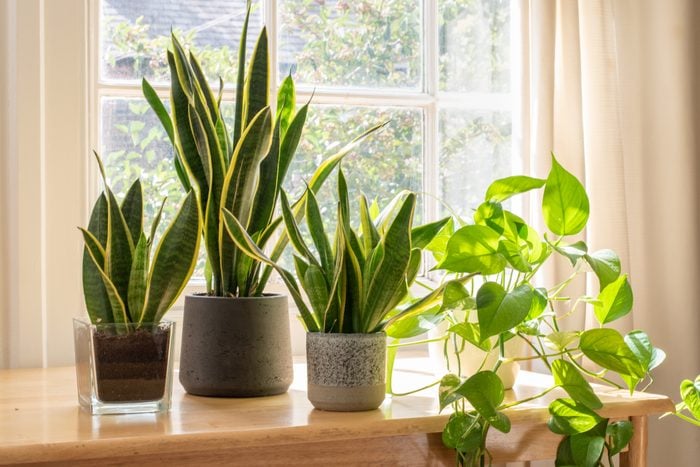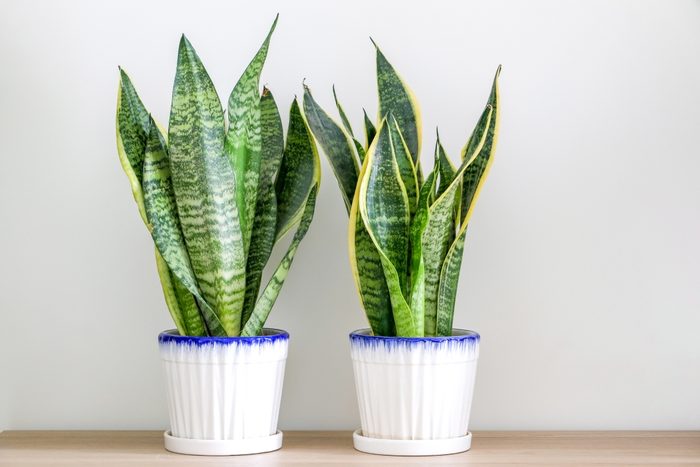
Snake Plant
For small, dark entryways, a snake plant, Sansevieria spp., may be a great choice. It can survive in low-light situations and doesn’t need much water. They come in many sizes, with smaller varieties topping out at six inches and larger ones growing three feet tall and taller. The leaves grow straight up, making it a great vertical accent that doesn’t require a lot of room.
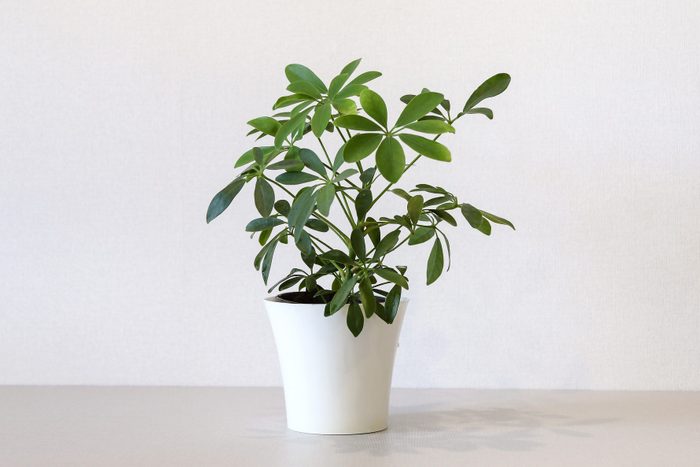
Umbrella Plant
The umbrella plant, Schefflera spp., tolerates a wide range of conditions but prefers medium to strong light and regular watering. It’s one of the few houseplants that can tolerate direct sun even in the summertime.
If it gets too big for the entryway, prune it back. Look for the variegated variety called ‘Gold Capella’ with streaks of gold on the leaves.
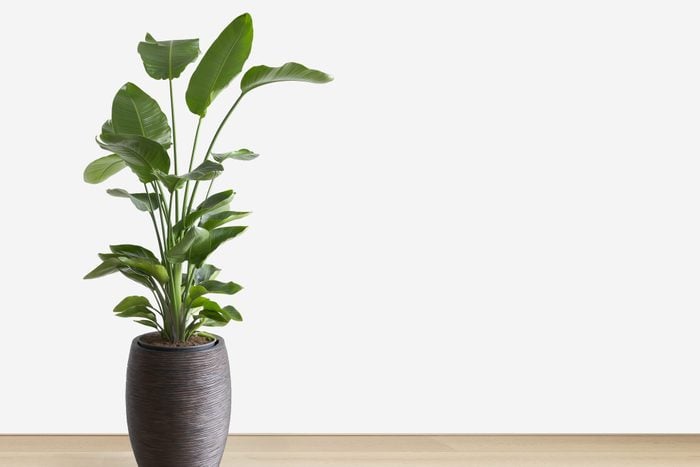
Bird-of-Paradise
If you have more room in your entryway and it’s sunny, a bird-of-paradise plant, Strelitzia spp., can make a big impact. Some varieties grow up to six feet tall indoors. Despite their tropical appearance, they’re fairly easy to grow. Water regularly and give it house plant fertilizer a couple of times a year.
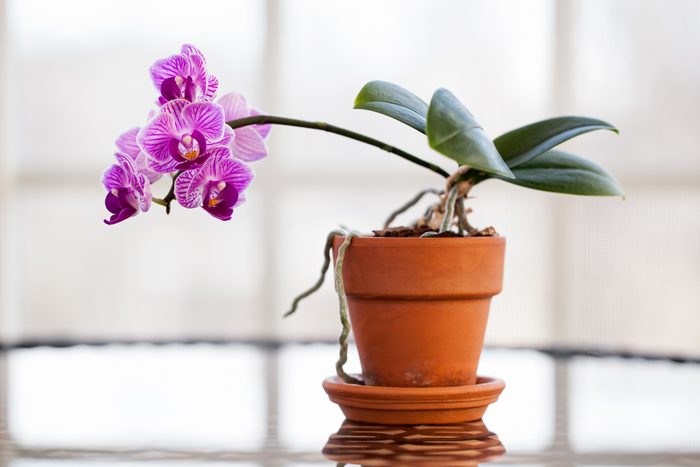
Moth Orchid
The moth orchid, Phalaenopis spp., in bloom can serve as a long-lasting simple flower arrangement in your entryway.
If you buy a moth orchid with just a few of the blooms open, it will continue to open new flowers for several weeks. Once it’s done blooming, leave it as a foliage plant until it blooms again, or replace it with a new blooming orchid.
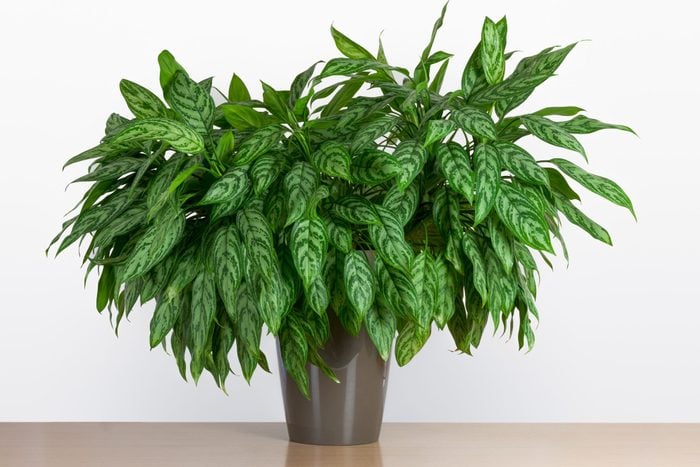
Chinese Evergreen
Like snake plants, Chinese evergreens, Aglaonema spp., are easy to grow with little light and little water. Most varieties feature silvery variegated leaves. But some, like ‘Red Valentine,’ have reddish variegated leaves. Overall, these plants are slow growing, so it would take some time for even a large plant to overwhelm a corner of an entryway.
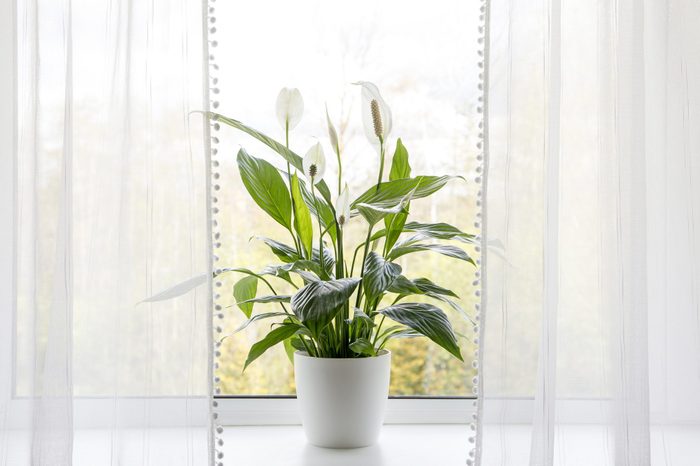
Peace Lily
Anyone who has ever grown a peace lily, Spathiphyllum spp., has probably had it droop completely when it got too dry. But once you water it, it perks right back up.
Enjoy smaller peace lilies as tabletop plants or place larger plants on the floor. They’ll bloom with lots of light, but also survive lower light conditions.
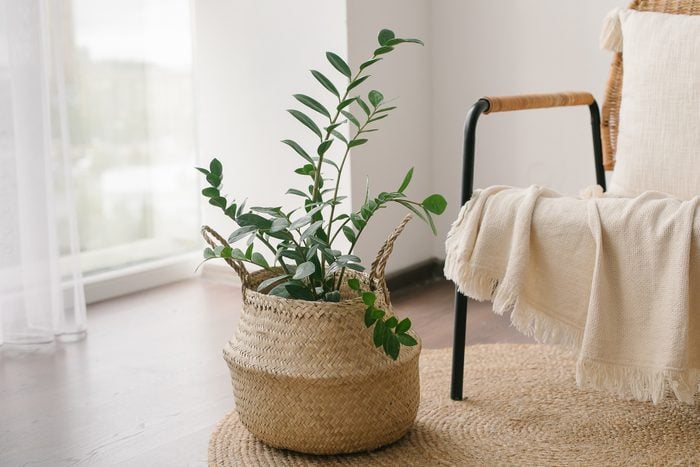
ZZ Plant
Zamioculcas spp. is another plant that can tolerate low light and infrequent watering. It also does well with more light. Some varieties can grow to two to three feet tall, making them a good choice for a floor plant. Water when the top inch of soil is dry. If you forget to water, it may drop a few leaflets but will revive when you water it.
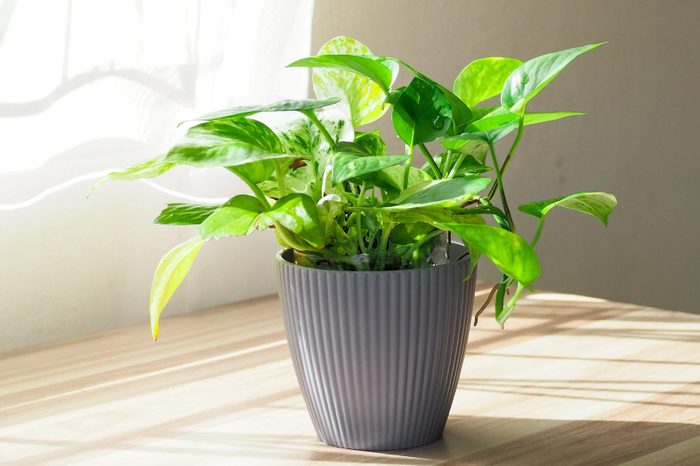
Pothos
If you lack floor tabletop space in your entryway, consider adding a hanging plant. Pothos, Epipremnum spp., is easy to grow and tolerates low to medium light. Trim it back before it becomes too long, and hang it where visitors unfamiliar with your entryway won’t bump into it.
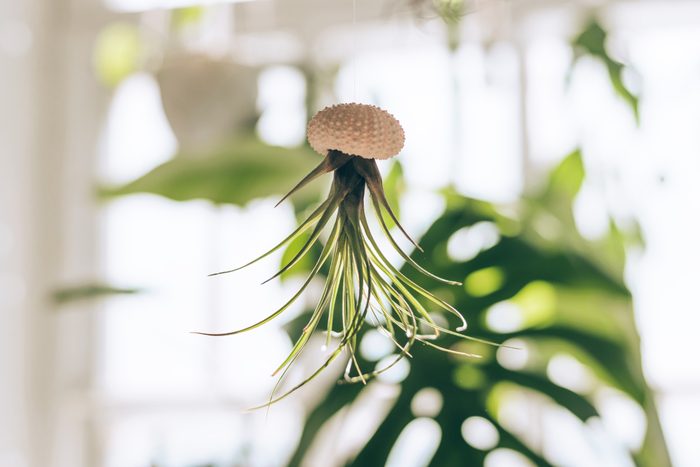
Air Plants
Air plants, Tillandsia spp., require no soil. They absorb all the nutrients and moisture they need from the air around them in their native habitats.
In an entryway, they can happily live in a bowl in bright light. To water them, submerge in a bowl of water for about an hour, then shake them off and return them to their spot. No need to worry about spilled dirt!
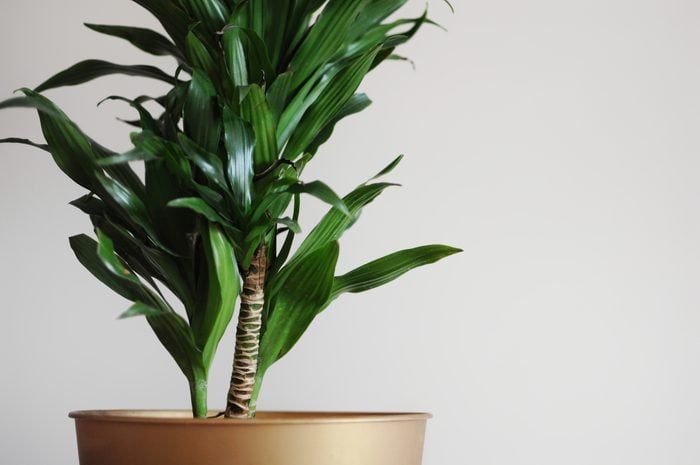
Corn Plant
Corn plant, Dracaena fragrans, is one of many dracaena plants that thrive with little care. You can purchase them as bushy short plants, or look for one growing on a woody trunk for more height. Corn plant can tolerate lower light conditions but would also do well with medium light. Water when the soil feels dry to the touch.

